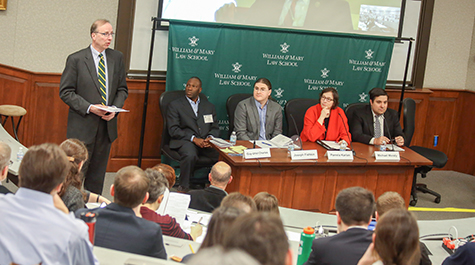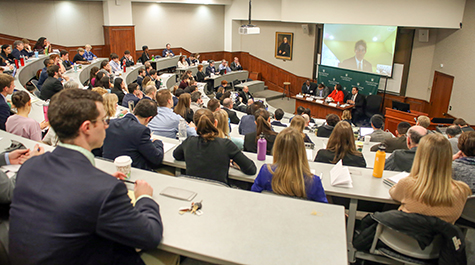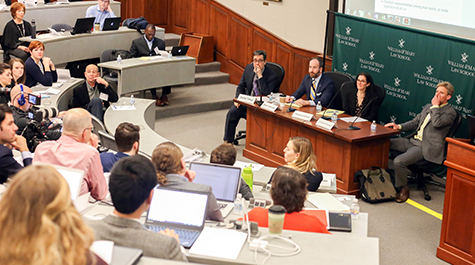W&M Law Review publishes “monster” symposium issue on legislative redistricting
As the United States Supreme Court ponders its decision in Whitford v. Gill, a case that could establish the lengths to which states legislators may go to draw electoral districts in their favor, the William & Mary Law Review has published proceedings from its timely symposium on the topic of redistricting.
Volume 59, Issue 5 of the Law Review contains 15 articles that grew out of topics first presented at a symposium, “2020 Redistricting: Mapping a New Political Decade,” held at William & Mary Law School on February 17, 2017.
“This is a particularly important symposium, given the unrelenting drumbeat of redistricting litigation that persists,” said symposium organizer Professor Rebecca Green. “Fifty years past Baker v. Carr, the historic decision enshrining the principle of ‘one person one vote,’ the legal framework guiding line drawers remains surprisingly unsettled.”
Green explains, “the articles in this monster issue of the Law Review—the longest volume published in the Law Review’s history—lay a definitive academic foundation for the country’s next stab at the maps.”
Authors explore pressing issues that will face line drawers in the 2020 redistricting round—from the fate and promise of independent redistricting commissions to racial justice in redistricting to the role of technology in creating fairer maps to basic principles of political representation and one person one vote.
Throughout the issue, authors address a number of questions. How should states sort political power? What role should the federal government have in policing lines? What is the impact of technological sophistication on the fairness of the redistricting process? What will be the biggest challenges (and opportunities) in the upcoming 2020 round?
Authors include Bruce Cain (Stanford), Wendy K. Tam Cho (Illinois), Guy-Uriel Charles (Duke), Chris Elmendorf (UC Davis), Joseph Fishkin (TX), Edward Foley (Ohio State), Rebecca Green (William & Mary), Richard Hasen (UCI), Dale Ho (ACLU), Michael Kang (Emory), Pamela Karlan (Stanford), Ellen Katz (Michigan), Justin Levitt (Loyola), Yan Y. Liu (NCSA), Michael T. Morley (Florida State), Luis Fuentes-Rohwer (Indiana), Nick Stephanopoulos (Chicago), Daniel Tokaji (Ohio State), Franita Tolson (USC), and Emily Zhang (Stanford).
To read articles from the special issue, please visit William & Mary’s Election Law web site.
Created in 2005 as a joint venture of the National Center for State Courts and William & Mary Law School, the Election Law Program seeks to provide practical assistance to judges called upon to resolve difficult election law disputes.
The William & Mary Law Review ranks among the top general interest law journals in the nation, featuring the work of noted scholars in all subject areas of the law. State and federal courts, including the United States Supreme Court, have cited the Law Review more than 200 times during the last decade.
About William & Mary Law School
Thomas Jefferson founded William & Mary Law School in 1779 to train leaders for the new nation. Now in its third century, America’s oldest law school continues its historic mission of educating citizen lawyers who are prepared both to lead and to serve.





